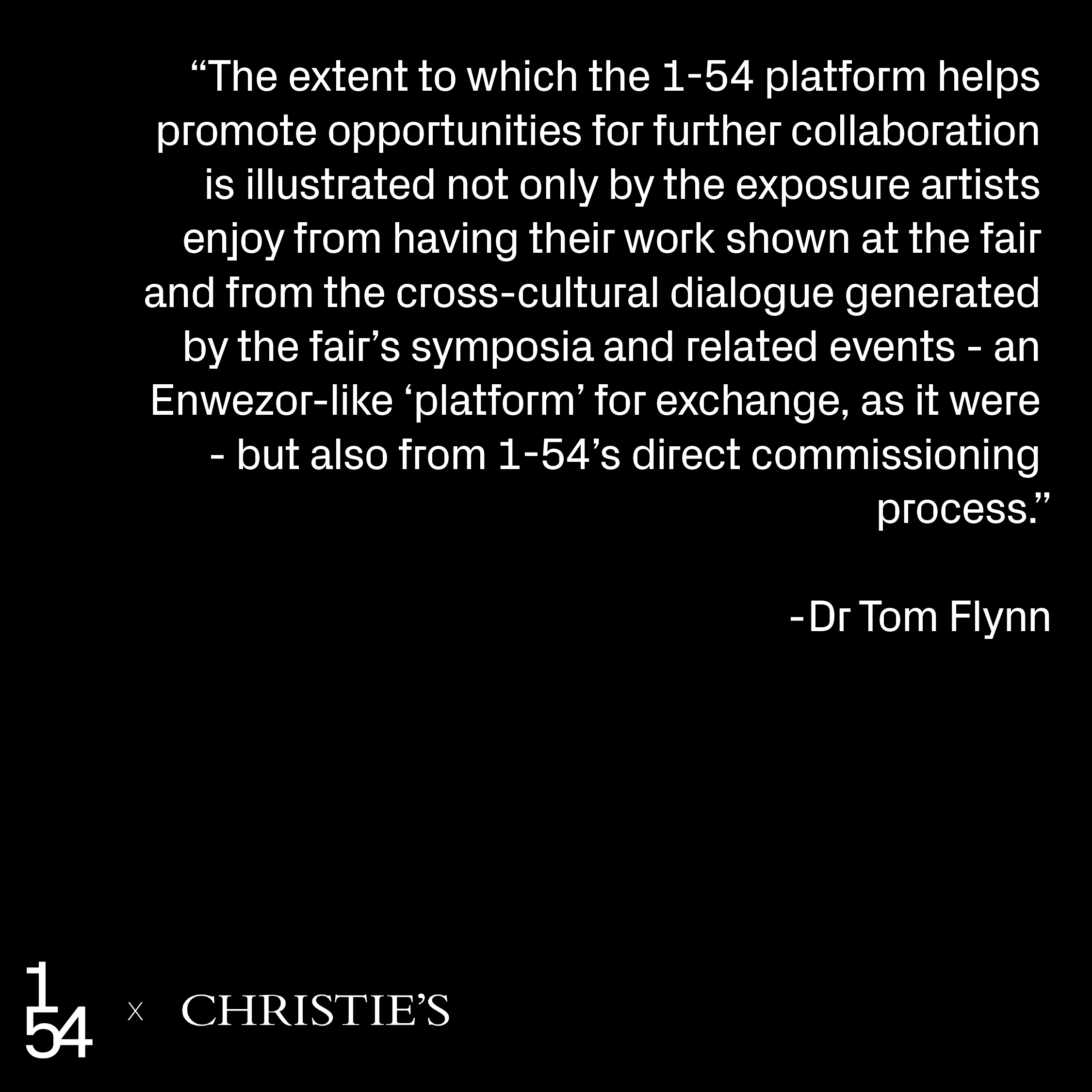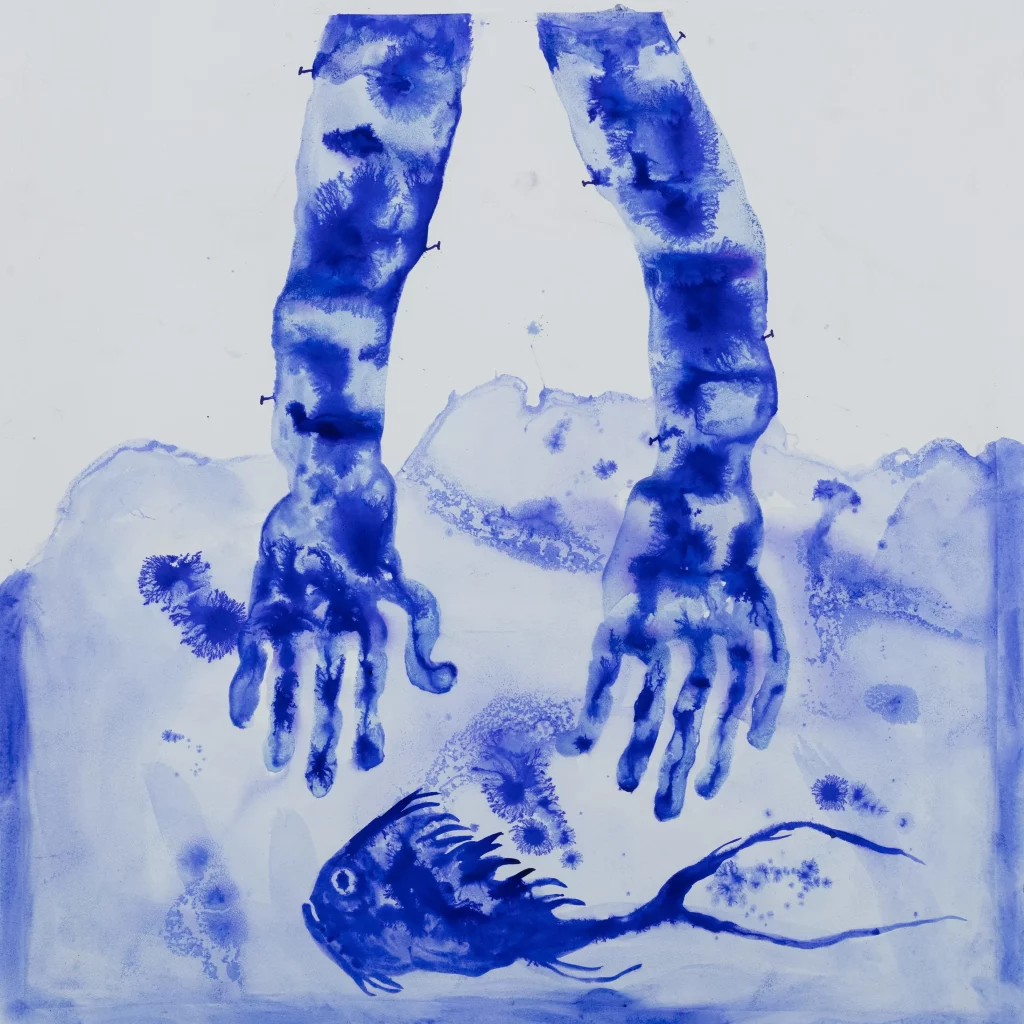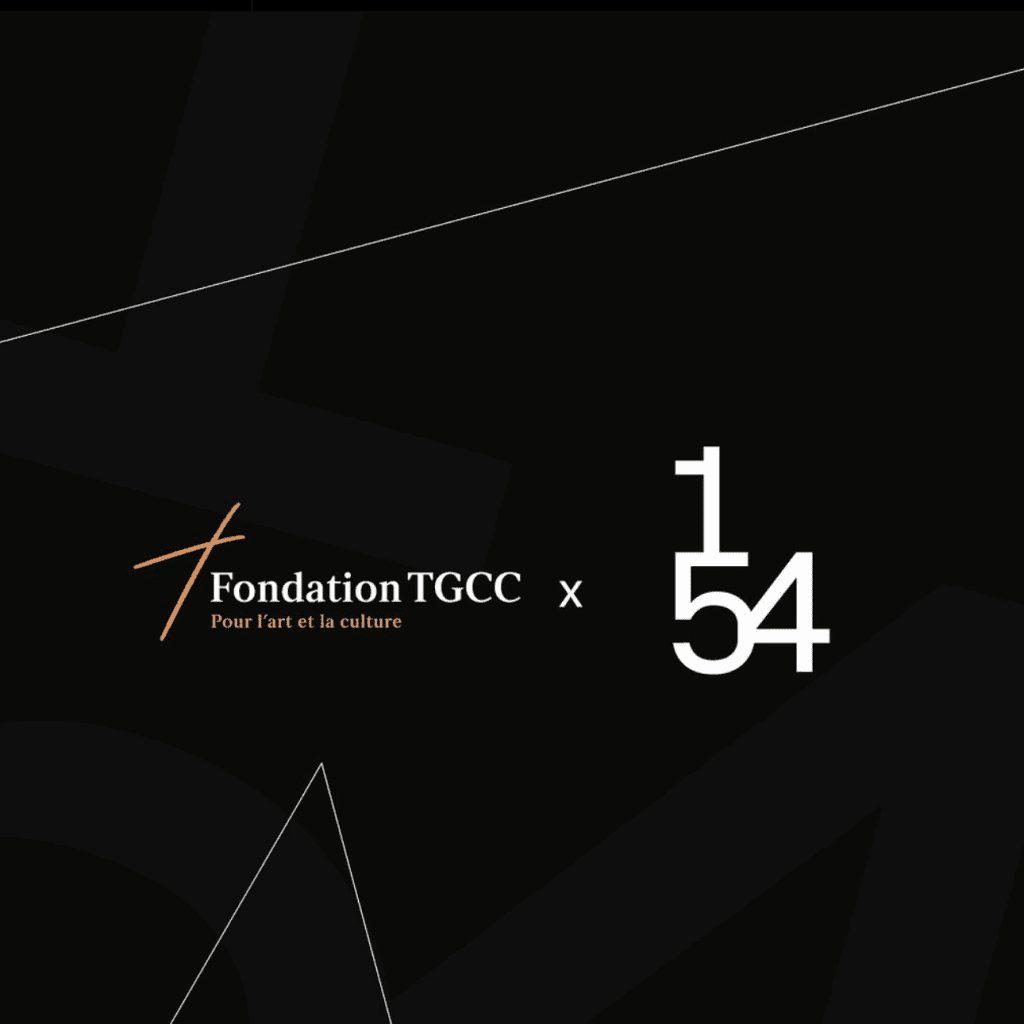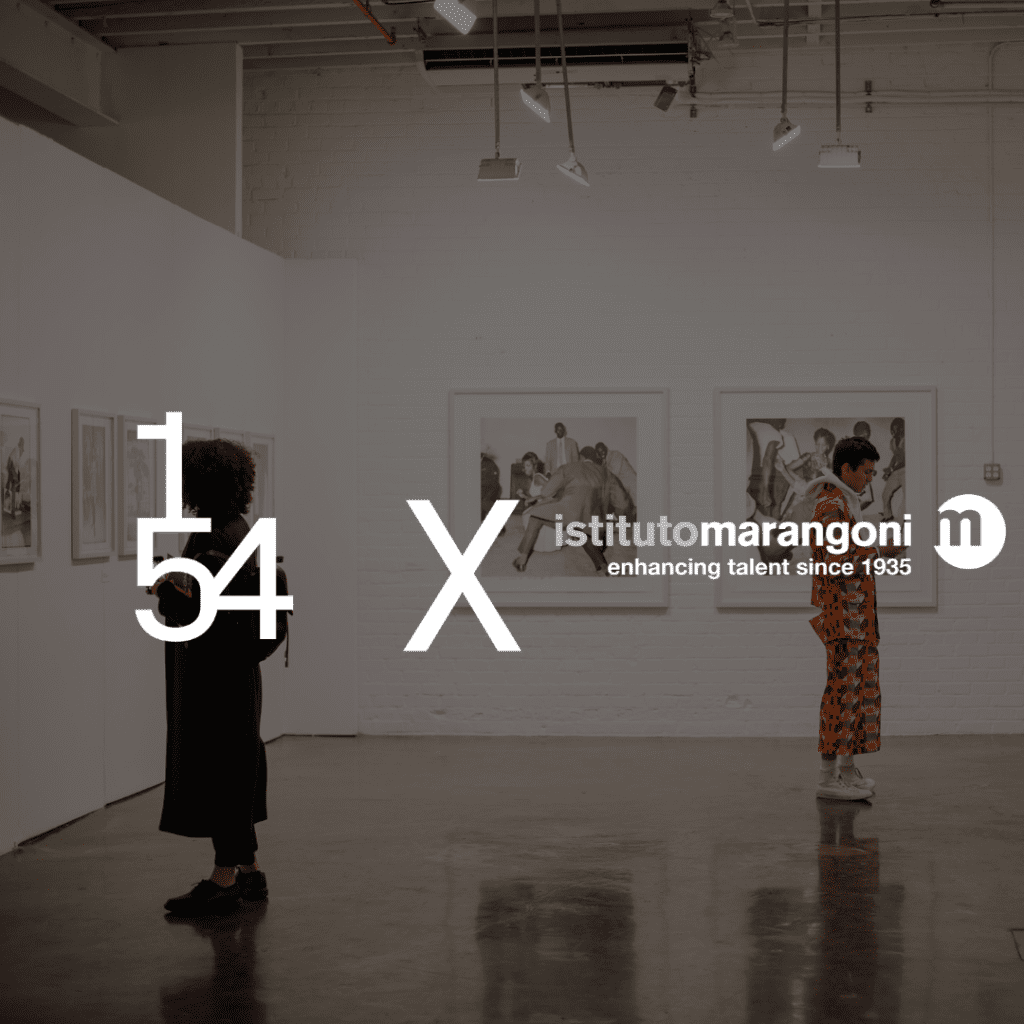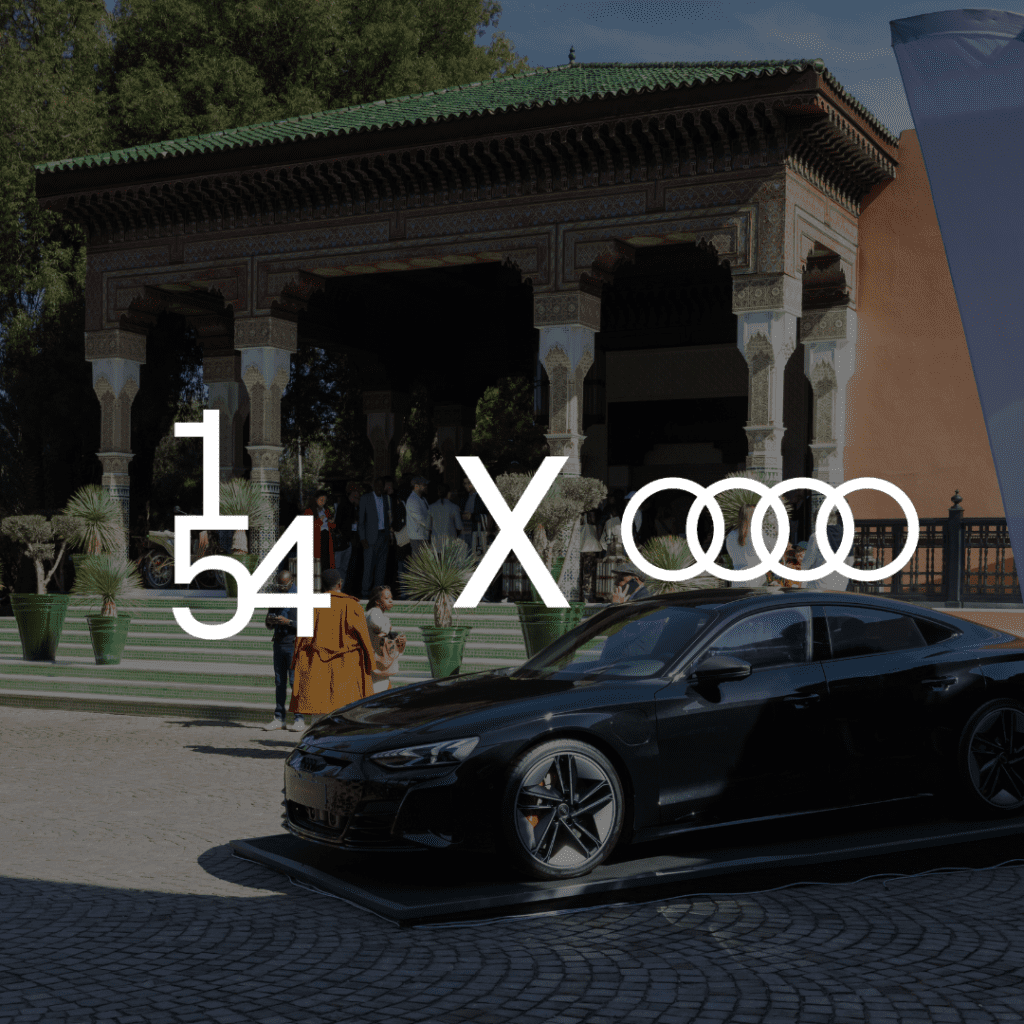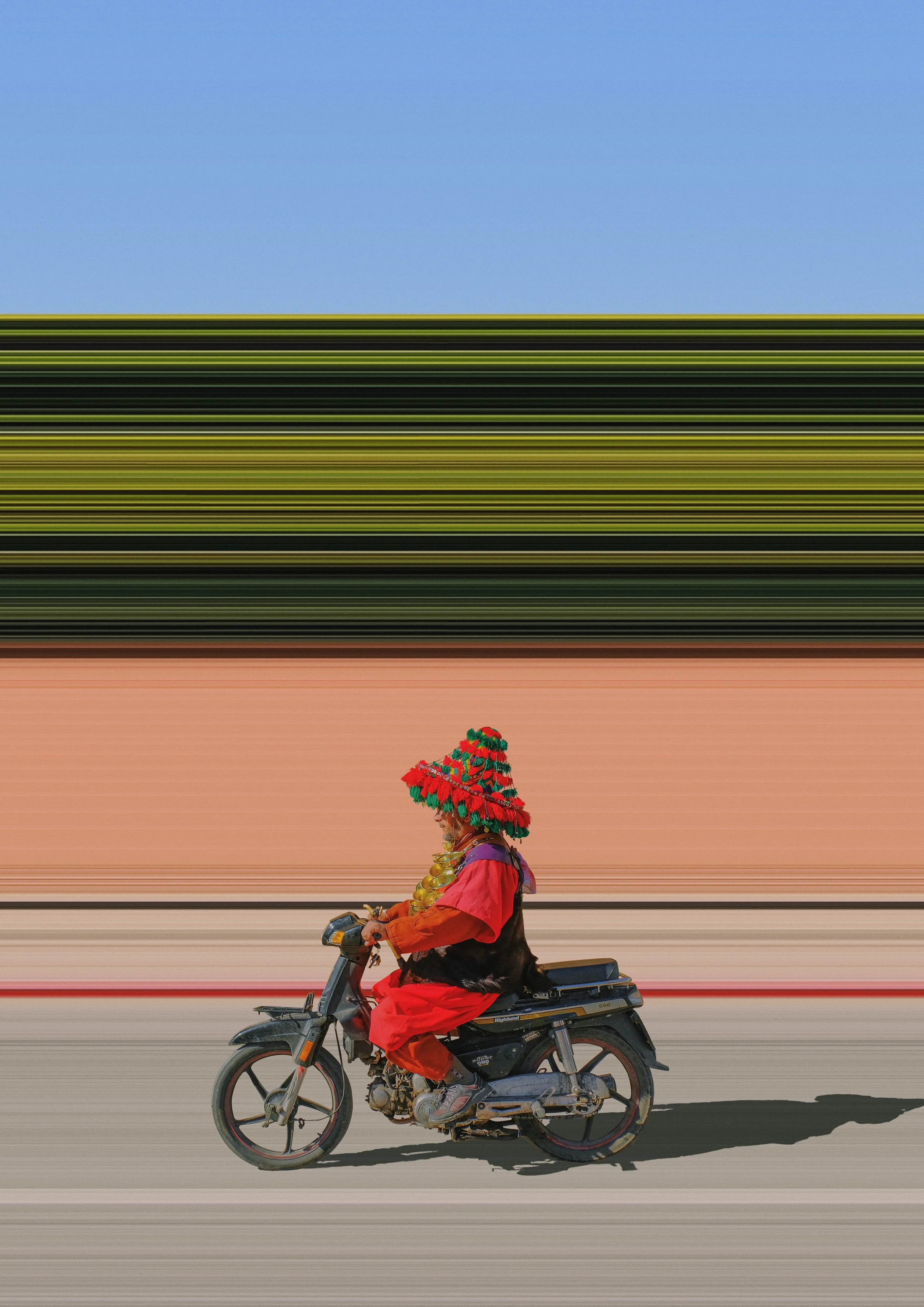1-54's Momentous First Decade
Text by Dr. Tom Flynn
This year 1-54 Contemporary African Art Fair is celebrating its tenth birthday. This is a cause for celebration. Ten years is a long time in the art market and much has happened since the fair’s first instalment in London in 2013, not least the launch of its successful annual satellite events in New York (since 2015), Marrakech (since 2018), and pop-up events in Paris in collaboration with Christie’s (in 2021 and 2022).
These developments alone testify to the extent to which 1-54 has responded to the burgeoning global appetite for African contemporary art (the fair’s name alone signalling its embrace of art from across the African continent). More importantly, over the past ten years the fair has proved itself uniquely capable of meeting the growing global demand not only for contemporary art from artists resident in Africa, but for a broad cross-section of art by practitioners in the diasporic community who are benefiting from the institutional framework offered by those countries with a developed art market. The 1-54 fair exhibits the work of African artists who reside in the African continent as well as those from its diaspora. Happily this is having a knock-on effect in Africa itself, which is beginning to reap the benefits. Look to the annual Marrakech instalment as an ample illustration of this.
Like her Frieze-founding counterparts, who identified the absence of a London contemporary art fair and in 2003 set about correcting that lacuna, 1-54’s founder-director Touria El Glaoui saw a similar critical gap in the annual fair circuit where African contemporary art was concerned and took it upon herself to address that deficiency. The 1-54 fair is now universally recognised as the leading satellite event to the Frieze fair editions in both London and New York, benefiting from the energy and visitor attention generated by its larger neighbour and contributing to the many positive externalities such events engender.
Touria’s motivation to launch 1-54 was in part inspired by the work of her father, the celebrated Moroccan painter Hassan El Glaoui (1923-2018), who had been prompted to pursue his talent in Paris by Winston Churchill, a close family friend. Working on her father’s exhibitions and preparing his catalogue raisonné gave Touria invaluable insights into the ecosystem of the contemporary art world and how important international visibility had been for her father’s career. With so much attention today being paid to the ‘financialisation’ of the contemporary art market and its growing profile as an investable ‘asset class’, Touria’s motive is a welcome breath of fresh air. The 1-54 fair emerged chiefly from a desire to support artists and to promote the contemporary art of Africa by providing a platform for discussion as much as for display — a motive increasingly marginalised by a rampant culture of speculative investment that views art primarily as a currency. Inevitably, African contemporary art has also become a target for investors and is now the subject of rigorous secondary market data analyses aimed at a speculative community.
However, the 1-54 fair is above all about broadening appreciation for the aesthetic and art historical significance of African modern and contemporary art, too long overlooked or marginalised by art world institutions. But now everything is changing, and at a dizzying speed. How to explain the extraordinary explosion of interest in the contemporary art emerging from Africa and its global diaspora?
Many interesting questions arise when surveying the progress of the African art market over the past half century. Why has African art featured so prominently in biennials and modern and contemporary art auctions (Bonhams have been holding auction sales of African modern and contemporary art since 2009), and yet until 1-54 arrived no significant commercial fair was devoted to the subject. This is all the more mystifying when one considers London’s status in the global art market ecosystem, the prominence of a number of African artists at blue-chip evening sales at the major auction houses over the past twenty years, and the still growing scholarly literature on African contemporary art and its global reception. Viewed from this perspective, it was perhaps only a matter of time before someone stepped forward with the vision and determination to supply what many artists, dealers, museums, and private collectors were clearly crying out for. Touria El Glaoui is that person.
It’s also instructive to look back at the references to Africa in art market data analyses since 2013, the year of the inaugural fair. The TEFAF Art Market Report for 2012 (a 25-Year Anniversary ‘Observations’ Report compiled by Clare McAndrew’s Arts Economics company) mentions Africa only once — on a single chart referring to High Net wealth distribution. However, a decade later, Arts Economics’ annual report for 2022, (published since 2017 in association with Art Basel and UBS), contains copious data and analytical insights on the African art market, as do the reports devoted to African Modern and Contemporary artists compiled by Anders Petterson’s Art Tactic company since 2019. The findings of these granular analyses offer a clear indication of the shift in attention since 2012. The art market doesn’t always know what it wants, until someone supplies it. But as 1-54 has demonstrated, build it and they will come.
To understand the present moment and its cultural significance, we need to look back to a series of landmark events in the broader museum and exhibition sector that pre-date the founding of 1-54. While the commercial realm may have been relatively slow to embrace African contemporary art, not so the curators of exhibitions, biennials, triennials and documentas, who as far back as 1989, were seeking to expand the field of vision beyond a Western focus to embrace a global perspective. We should also shout out to one or two even earlier excursions, notably the exhibition staged at the Camden Arts Centre in north London in 1969. Regarded as “the first show in Britain of contemporary African art,” the exhibition featured a number of now familiar names in the African contemporary art space, including, among others, Lubaina Himid, Frank Bowling, and Sonia Boyce (who this year represented Britain at the Venice Biennale — the first time a Black woman has done so — and won the Golden Lion prize for her work Feeling Her Way.)
As the artist, critic, and curator Rasheed Araeed (also an exhibitor at the Camden exhibition), subsequently wrote, “Success is an extremely complex issue, but it can be observed that success in the art market alone is not enough to sustain an artist’s career for any length of time, and institutional support is necessary in the consolidation of the artist’s position and his/her place in history.” Araeed went on to ask, “Can we conclude from this that Afro-Asian artists did not receive support from the institutions? If so, why not?” The answer to that question is now becoming easier to answer as we look back at the political and societal changes that have taken place in the intervening decades and how institutions finally began to respond.
A seminal moment in the transition from obscurity to institutional recognition was the adventurous Magiciens de la Terre exhibition curated by Jean-Hubert Martin at the Centre Pompidou and the Grande Halle at Parc de la Villette in Paris in 1989. Even beyond the art world goldfish bowl, few need reminding of how that year heralded a series of seismic geopolitical, social, and economic upheavals following the fall of the Berlin Wall. The culture sector was ultimately swept up in that tide of change. The ensuing decade witnessed not only the end of Soviet communism and the expansion of market-based economies across the developing world, but also the concomitant wealth generation that fuelled the dynamic advance of contemporary art as a collectable category.
The Magiciens de la Terre exhibition was itself an attempt at a corrective response to an earlier moment in the African art exhibition sector, namely the controversial Primitivism in 20th Century Art: Affinities of the Tribal and the Modern, curated by William Rubin at the Museum of Modern Art in 1984. The latter triggered a stream of criticism from those who saw it as a consolidation of a prevailing western-centric approach that viewed African ‘Tribal’ objects as in essence an anonymously created archival source for western modernists seeking authenticity and an escape from the constraints of European academicism. That centre-periphery mentality spurred the Magiciens curators into striving for a more international balance between European and North American artists and their now named contemporary counterparts from what was then regarded as the ‘Third World’, or what is now more commonly termed the Global South. This was also effectively an attempt to liberate African art from the anthropological or ethnological prism through which it had hitherto been viewed.
Paradoxically, these two controversial events served to deepen the critical discourse around African visual art and culture that already had a longer history in the literary field, dating back to the Martiniquan poet and editor Aimé Césaire (1913-2008) and his associates in the inter-war years. Césaire’s founding of the influential Francophone philosophical and ideological concept of Négritude had an enduring influence on many African artists including, notably, the celebrated Nigerian painter and sculptor Ben Enwonwu (1917-1994), whose work continues to figure prominently in Bonhams’ African art auctions.
The Magiciens de la Terre exhibition also inspired a number of adventurous individuals to begin assembling collections of African contemporary art, among the most conspicuous being that of the Italian billionaire Jean Pigozzi, heir to the Italian Simca automobile fortune. Pigozzi’s Geneva-based 15,000-piece Contemporary African Art Collection (CAAC) was curated for twenty years by André Magnin, organiser of a number of important African art exhibitions drawn from the Pigozzi collection, notably Out of Africa (Saatchi Gallery, London, 1992), which helped launch the international career of Benin artist Romuald Hazoumé, among others; African Art Now (Menil Collection, Houston, 2005); and 100% Africa (Bilbao Guggenheim, 2006-7).
It was only a matter of time before others seized the opportunity to begin assembling similarly significant collections. For the past ten years the 1-54 fair has been an enabling factor in that process.
Elsewhere, in the museum sector, African art was the subject of the 1989 exhibition The Other Story: Afro-Asian Artists in Post-War Britain, curated by Rasheed Araeen, and the 1991 exhibition Africa Explores, curated by Susan Vogel at the Centre for African Art, New York. In the catalogue to the latter, Vogel echoed the words of Araeen by pointing to the importance of establishing a cultural infrastructure in which the arts could flourish.
The Africa Explores exhibition adopted what now seems a somewhat idiosyncratic curatorial structure, dividing African material into five categories — ‘Traditional Art’; ’New Functional Art’; ‘Urban Art’; ‘Extinct Art’; and ‘International Art’ (“made by artists who are academically trained or who have worked under the guidance of a European teacher/patron.”) These ‘International Artists’, Vogel explained,
“live in cities, often represent their governments in international gatherings, are more widely travelled than other artists, and have a higher standard of living. Their works are shown in exhibitions, and may be sold to foreigners and international businesses as well as to the governments and the elite of their own countries. Their works can be concerned with issues of form, and the meanings can be obscure to the uninitiated.”
The meanings of today’s African and African American contemporary art are no longer quite so obscure, even to the seemingly uninitiated, many of whom have witnessed the traumatic events of recent years, albeit often at a remove via mainstream or social media. The reemergence of figurative art may have been a contributory factor in communicating social issues — whether in the paintings of Amoako Boafo, Marlene Dumas, Kehinda Wiley, and Njideka Akunyili Crosby, or the silhouette wall installations of Kara Walker. And yet abstraction continues to insist on its enduring ability to access different but no less potent planes of thought. The work of Mark Bradford, Julie Mehretu, and El Anatsui, amongst many others, have shown how the social and political concerns of previously marginalised ethnicities can be powerfully expressed through the language of abstraction. Video and film also fit into the figurative category. Isaac Julien’s recent five-screen black-and-white film installation, Once Again…(Statues Never Die), explores the presence of African ‘tribal’ art in the Barnes Collection and other museums and interrogates Barnes’s often fraught relationship with Alain Locke, a significant figure in the establishment of the Harlem Renaissance.
African art was also the focus of the Whitney Biennial of 1993. The show threw an early light on the troubling issues that continue to swirl around the African American experience by including George Halliday’s amateur video footage of the brutal beating of Rodney King by Los Angeles police officers in 1992. The Black Lives Matter movement that was revitalised in response to the killing of George Floyd, and the subsequent spate of police violence against the African American community, had a profound effect on the African art market. Alert to the public mood and the ensuing cultural reverberations, art dealers, auction houses, museums, and other institutions began belatedly marshalling their resources to address the yawning gaps in their current and historical representation of artists of colour.
The Africa Remix exhibition at the Hayward Gallery, London in 2005, curated by the Swiss-born writer and critic Simon Njami, was perhaps the closest snapshot survey of African contemporary art to that now provided annually by the 1-54 fair. It’s worth asking why the Africa Remix initiative — two years after Frieze was launched — failed to spark the creation of a commercial fair. That said, let us not underestimate the importance of the Hayward show, which almost certainly stimulated demand, albeit indirectly, for African contemporary art among both institutional and private collectors. As it transpired, the world had to wait another eight years before a continent-wide African art fair emerged with 1-54.
This merely underscores the shortage, until relatively recently, of appropriate channels for the distribution of African art and the dissemination of ideas and cultural conversations on its broader cultural and political resonance. Recent history tells us that the political realm can be the most potent agent of cultural transition. It remains an undeniable truth that the Black Lives Matter movement provided the kind of powerful stimulus to societal change that not even the most earnest and well-meaning exhibition could hope to achieve.
That being said, it is in the biennial exhibition sector that we find perhaps the most significant factors that have propelled African contemporary art to its increasingly elevated status. No figure is more important in this realm than the late Okwui Enwezor (1963-2019), critic, philosopher, international curator extraordinaire, and arguably the most impactful force behind the long overdue repositioning of African contemporary art from art world neglect to its now growing prominence in the global art ecosystem. As Jens Hoffmann has written, Enwezor can be credited for “jump-starting” the current much needed re-evaluation of African art history in the post-colonial context, a legacy being carefully safeguarded and continued by the 1-54 fair.
Enwezor’s numerous achievements in this realm have been comprehensively documented elsewhere and so a brief summary will suffice in this context. Most notably, his appointment in 2011 as curator of the Haus der Kunst in Munich was a recognition of the extent to which he was already changing the terms of engagement in the reception and critical discourse around African contemporary art as well as art from across the Global South. After co-founding the influential Nka: Journal of Contemporary African Art in 1994, Enwezor was immediately in universal demand as an authority on African contemporary art. Thereafter, despite having no formal background in art history (he had trained as a political scientist), he proceeded to curate some of the most important exhibitions and biennials devoted to the contemporary art of Africa and the diaspora. As well as his innovative exhibitions at Munich’s Haus der Kunst, a by no means exhaustive list of his other groundbreaking contributions includes the 1992 Guangzhou Biennale; the 2nd Johannesburg Biennale (1997); the Venice Biennale (2015), and the 2002 Documenta 11 in Kassel, Germany.
His 2002 documenta, in particular, demonstrated the panoptic vision he promoted across all his curatorial work, by breaking with the tradition of locating the exhibits in the German town alone. Instead he created a series of ‘Platforms’ located around the world and delegated the curatorial decisions to a team of curators who would oversee each territory. As Reesa Greenberg has noted, the ‘platforms’ were essentially designed as arenas for discursive exchange, reimagining the conventional sense of art as something to be exhibited into a catalyst for dialogue such that viewers were required to “rethink the relationships of their minds and bodies to the spaces and time of the exhibition.” To disrupt so radically the format of any long-established cultural programme requires uncommon courage, not least within a western, Eurocentric orbit, but therein lies the kernel of Enwezor’s fearless genius.
Enwezor himself described his directorial style at Haus der Kunst and his curatorial approach to biennales as “round table.” His strategy succeeded in spreading documenta’s cultural impact further than ever before, underscoring the relevance of French critic Édouard Glissant’s notion of ‘mondialité.’ As if we needed reminding, a 2015 global study by Ernst & Young concluded that “the cultural and creative world is now multipolar.”
It is no exaggeration to say that Enwezor helped redraw art world cartography, expanding our horizon of attention, turning African art into a global concern, claiming for it equal weight and importance as its European and North American counterparts: historically, culturally, politically, ideologically, and economically. In doing so, he also contributed to exposing what Jane Chin Davidson and Alpesh Kantilal Patel describe as, “the underlying xenophobic unconscious that persists in the discipline of art history,” while spurring museums and other institutions to conduct an ethical audit on their history and collections as part of an ongoing process of ‘decolonisation’. The museological implications of these recent cultural vibrations are becoming clearer almost month on month with museums across Europe and North America under increasing pressure to conduct provenance research into their collections with a view to selective repatriation.
Enwezor’s visionary, border-erasing approach to exhibition making also generated manifold economic benefits. His work coincided with the global economic turn of the 1990s and the emergence of contemporary art as the market category of greatest appeal to private and institutional collectors in both established markets and across the world’s rapidly developing economies. However, as prices for works by established names from the western canon rocketed to unprecedented heights in the late 90s, national museums struggled to compete on their limited acquisition budgets.
Then the financial crisis intervened, soon followed by the political repercussions caused by widespread feelings of disempowerment among the already economically disenfranchised. After the murder of George Floyd by a white police officer in 2020 re-energised the Black Lives Matter movement, and the exposure of wealthy white men exploiting their positions of power over women, which gave rise to the #MeToo campaign, everything changed. African contemporary art, work by artists of colour more generally, and art by women artists, began to assume greater prominence as public institutions and private collectors scrambled to adapt to the changing political and cultural horizon.
Following the tumults of the last three decades, African art has assumed a deeper aesthetic-political undercurrent. Here again we look to Enwezor’s dispersed, decentralising, multi-disciplinary methodology as a catalyst in that process.
Discourse and conversation often yield more visible benefits. It was after a discussion between curator Hans Ulrich Obrist and the Nigerian artist Otobong Nkanga at the 1-54 Forum in 2013, that Obrist included Nkanga in his well-received 14-Rooms project at Art Basel the following year. As Natasha Becker, inaugural curator of African art at the de Young Museum in San Francisco, has observed, Nkanga’s work sits at the interstices between art, politics, and social research. Whether in her performances or in her textile and photographic work, Nkanga addresses the legacies and aftershocks of exploitative colonialism and yet remains faithful to a deeply personal aesthetic. “Fascinated by how people act, interact and construct meaning and identities,” Becker writes, “Nkanga seeks to illuminate the fraught relationships between histories, people and environments.”
The extent to which the 1-54 platform helps promote opportunities for further collaboration is illustrated not only by the exposure artists enjoy from having their work shown at the fair and from the cross-cultural dialogue generated by the fair’s symposia and related events — an Enwezor-like ‘platform’ for exchange, as it were — but also from 1-54’s direct commissioning process. Take, for example, the multi-figure sculptural installation by British-Trinidadian artist Zak Ové, entitled The Invisible Man and the Masque of Blackness, a project commissioned by 1-54 and first installed at the fair’s Somerset House location in 2016. Originally comprising 40 two-metre tall standing figures, the work was inspired by a small carving Ové’s father had given him as a child after a trip to Kenya, which he scaled up and reimagined in order to reference the centuries-long history of white racism and colonialism. Following its occupation in the Somerset House courtyard, the work featured in expanded form at Yorkshire Sculpture Park, where Ové described it as appearing “almost as a tribe out of context, heralding, if you like, the plight of what it is to be a member of Africa’s diaspora abroad.” The work went on to appear at San Francisco Civic Center Plaza, and the Gerald B. Cantor Sculpture Garden at Los Angeles County Museum of Art, endorsing the long reach of 1-54’s global mission.
The fair’s internal and external exhibition format (the highest density of ‘African’ galleries on an international platform) is complemented by its Forum discussion panel, its generous commissioning process, and its online archive, which together represent the most significant annual promotion yet of African contemporary art in the global art ecosystem.
It is easy to take the archival aspect for granted since it’s now almost a prerequisite for any self-respecting cultural project to be matched by a technologically sophisticated online presence. However, in the present context the 1-54 online exhibition archive is of particular value and significance in cementing and making universally accessible the history of African contemporary art for future generations. Contemporary art it may be, but the fair also provides a home for a continuous process of historical research and recovery since so many of today’s African contemporary artists devote their work not merely to the present moment but to excavating and understanding the historical forces that have brought us here. The 1-54 online archive is at the centre of the current culture of recovery and realignment of an African mentalité.
It is important to remember that a thriving institutional framework is also of critical importance to an artist’s gallerist who is equally dependent on the support of other members of the art market ecosystem, including collectors and museum directors. This is perhaps best expressed by one of London’s most dynamic young dealers. Jack Bell, founder director of London-based Jack Bell Gallery, has found the 1-54 fair an “incredibly important part of his gallery’s journey” from the very beginning.
“As a young gallery working with contemporary artists from Africa, it provided a focal point for artists, galleries, collectors, museums, and academic discussion. 1-54 created momentum in the early stages of development, at a time when a lot of these artists were not yet being embraced by the big galleries, major art fairs, museums, and auction houses. I think it made the quality and depth of these artists more visible to a wider audience. From our experience, the American museums were particularly supportive at the fair right from the start. We also met a lot of collectors from the US and Europe in the first few editions. Now I feel the market has grown to be truly global, with a noticeable increase in sales to Asia in recent years.”
This year’s fair is likely to prove particularly helpful in gauging the health of the market for African modern and contemporary art, post-pandemic. We know from ArtTactic’s African Artists report referred to earlier that auction sales of Modern & Contemporary African art “surged by 44.1% in 2021, from $50.2 million in 2020 to $72.4 million last year,” the highest total ever for African Modern and Contemporary art at auction. Equally revealing is the finding that auction sales of ‘Young Contemporary African Artists’ “generated $24.9 million in sales in 2021 — a surge of 121% from 2020.”
The impact of the internet and social media in igniting that groundswell of cultural activism has not gone unnoticed, but progress depends on more than this. As Hito Steyerl has noted, “[…] to expect any kind of progressive transformation to happen by itself — just because the infrastructure or technology exists — would be like expecting the internet to create socialism or automation to evenly benefit all humankind. The internet spawned Uber and Amazon, not the Paris Commune.”
Parallel to events in the political arena, the past two years have also witnessed radical innovations at the interface of art and technology. This has been most marked in the digital art sector which, although hardly new when viewed in the context of a longer history of art, has nevertheless given birth this time to the latest newfangled thing — Non-Fungible Tokens (NFTs).
Last year, the 1-54 fair took the plunge and partnered with Christie’s to present an auction of Nigerian crypto-artist Osinachi’s NFT series Different Shades of Water. The online NFT auction marked the first NFT by a contemporary African artist offered by Christie’s in Europe and was the first NFT collaboration for 1-54. The NFT project was repeated earlier this year, when 1-54 collaborated with Code Green and Christie’s for a selection of NFTs at the ‘Trespassing’ auction from 8-21 July. Part of the proceeds of the online auction went to the African-led ‘Great Green Wall’ cause – an audacious climate initiative growing an 8000 km natural wonder of the world across Africa.
So, 1-54 sails on, proving the soft power of cross-cultural collaboration in turbulent times, while looking ahead to the next ten years of continuing growth in the market for African contemporary art.
